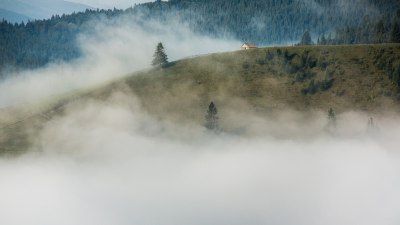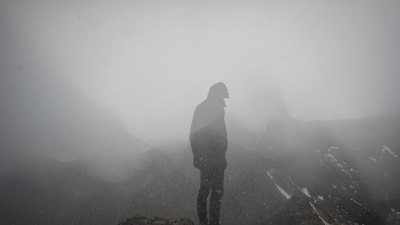Why the First Warm Day After Cold Weather Feels So Powerful
Explore why the first warm day after cold weather feels so impactful on our mood, body, and environment in this detailed explanation.

The contrast between cold weather and the first warm day that follows can be striking, often evoking a powerful emotional and physical response from people. This sensation is not merely psychological but is rooted in complex interactions of environmental changes, physiological reactions, and social dynamics. Understanding why this initial warm day feels so remarkable requires an exploration of various elements including meteorology, biology, and cultural experiences.
The Psychological Impact of Seasonal Transitions
Humans have a deep psychological connection to seasons. After a prolonged period of cold, dreary weather, the arrival of warmth is intertwined with notions of renewal, hope, and vitality. Psychologically, this signals a break from discomfort and confinement typically associated with cold days. The warmth acts almost as a mood enhancer, positively influencing mental well-being.
Research into Seasonal Affective Disorder (SAD) demonstrates how lack of sunlight during cold months can lead to depressive symptoms. The sun’s return with the first warm day increases exposure to natural light, which boosts serotonin levels in the brain. Higher serotonin is linked with improved mood and feelings of happiness, thus the first warm day marks a significant uplift in mental health for many individuals.
Physiological Responses to Warmth After Cold
Beyond psychological effects, our body undergoes physical changes when transitioning from cold to warmth. Cold weather causes vasoconstriction—narrowing of blood vessels—to preserve heat. When warmed, blood vessels dilate, improving circulation which can create a sensation of vitality and energy.
Additionally, cold temperatures can make muscles stiff and joints achy. Warmth relaxes muscles and lubricates joints, reducing discomfort and encouraging movement. This physical relaxation can feel like a welcome release after days of stiffness and can invigorate the body, making the first warm day uniquely energizing.
Environmental and Sensory Amplification
The sensory contrast between cold and warmth also plays a role in intensifying the first warm day experience. Cold weather dulls many senses; for instance, chilly air often feels crisp but can numb fingertips and reduce vibrancy of colors under gray skies. Warmth revives sensory perception—skins senses the heat, colors appear brighter under sunlight, and sounds become more vivid.
Scents like blooming flowers, fresh grass, and earth awaken after cold months. This sudden surge of sensory information creates a powerful impression of the environment. The tactile pleasure of warmth touching the skin and the revitalization of sensory input make this day stand out sharply compared to monotonous cold days.
Social and Cultural Connections
Socially, the first warm day after cold weather often encourages outdoor activity and communal gatherings that are lacking during colder months. People flock to parks, outdoor cafés, and public spaces eager to absorb warmth and sunlight. This return to socializing outdoors fosters feelings of community and joy.
Cultural traditions around celebrating the arrival of warm weather also amplify its significance. Many cultures host festivals, fairs, or ceremonies marking spring or a seasonal shift, reinforcing positive anticipation and collective celebration. These social experiences embed the first warm day with emotional resonance far beyond mere temperature change.
The Role of Circadian Rhythms and Light Exposure
Light exposure plays a critical role in regulating circadian rhythms, the body’s internal clock controlling sleep-wake patterns, hormone production, and overall energy levels. During cold and cloudy seasons, reduced sunlight disrupts these rhythms, leading to lethargy and poor mood. The arrival of warmth frequently coincides with longer and sunnier days, helping reset and synchronize circadian rhythms.
Improved alignment of circadian rhythms enhances alertness and motivation, explaining why people feel revitalized on the first warm day. Natural light triggers the suppression of melatonin during the day, increasing daytime energy, while nighttime melatonin production helps improve sleep quality. This synchronization promotes sharper focus, better mood, and an overall sense of well-being.
The Impact of Vitamin D Synthesis
One of the most vital biological effects of increased sunlight and warmth is vitamin D production. During cold months, people receive less sun exposure, reducing the skin’s ability to synthesize vitamin D. This vitamin is critical not only for bone health but also for immune function and mood regulation.
The first warm day often encourages people to venture outside, allowing their skin to absorb ultraviolet B rays needed for vitamin D synthesis. The impact of this boost on energy and health can be substantial, contributing to the powerful feeling associated with that day.
Evolutionary Perspectives
From an evolutionary standpoint, humans are conditioned to respond favorably to warmth as a signal of abundance and reproductive opportunity. Cold periods historically presented challenges such as scarcity of food, harsh living conditions, and higher risks of illness. Thus, detecting and responding to the arrival of warmth was essential for survival.
The strong emotional response to the first warm day can be viewed as an adaptive mechanism, motivating individuals to prepare for and capitalize on the favorable conditions for planting, hunting, and social bonding. This ingrained biological response remains strong despite modern conveniences.
The Effect on Physical Activity and Exercise
Cold weather often inhibits physical activity due to discomfort or safety concerns related to icy conditions. The first warm day acts as a catalyst for movement, encouraging outdoor exercise, walking, and sports. Increased activity boosts endorphins, another class of mood-enhancing neurochemicals, creating a positive feedback loop that intensifies the day's impact.
Regular physical activity also improves cardiovascular health and mental resilience. Beginning this activity surge on the first warm day after cold weather means people often associate that day with motivational renewal and health benefits, enhancing the perceived power of the experience.
Changes in Air Quality and Oxygen Levels
Winter air tends to be dry, cold, and sometimes polluted due to heating systems and atmospheric conditions. The arrival of warmer days often brings cleaner air, higher humidity, and increased levels of oxygen in the atmosphere. These changes can improve respiratory function and make breathing feel easier and more refreshing.
Better air quality and oxygenation stimulate the brain and body, contributing to a sensation of vitality and well-being on warm days following cold stretches. This improvement in environmental health further magnifies the powerful feeling people experience.
The Color and Light Spectrum Changes
Winter’s low sun angle delivers softer, less intense light with limited spectrum range. As the sun climbs higher in the sky with warming weather, sunlight becomes stronger and richer in the visible spectrum. This change enhances the visual environment, illuminating colors vividly and making landscapes seem more alive and inviting.
The new quality of sunlight also affects plants, encouraging photosynthesis and blooming, which reinforces the sense of life and growth. This revitalization of the natural world mirrors and magnifies human feelings of renewal during the first warm day.
Metabolic and Hormonal Adjustments
The body adapts metabolically to cold by increasing heat production and altering hormone levels such as thyroid hormones and cortisol. Warmth signals a reduction in these demands, allowing metabolism to normalize and reducing stress hormone levels. These hormonal shifts can improve mood and reduce feelings of fatigue.
Furthermore, warmth may improve digestion and nutrient absorption as blood flow enhances gastrointestinal function. These cumulative biological adjustments generate a sense of well-being, comfort, and efficiency on the first warm day after cold weather.
Symbolism in Literature and Art
The power of the first warm day after cold weather has fascinated artists and writers for centuries. It often symbolizes rebirth, hope, and transformation. This cultural symbolism reinforces individual emotional responses by embedding the concept deeply in societal narratives and personal identities.
In literature, the emerging warmth frequently acts as a metaphor for enlightenment, love, or new beginnings. Art depicting springtime scenes conveys this emotional depth visually, inspiring viewers to experience similar feelings of joy and revitalization. These symbolic associations deepen the subjective impact of the warm day.
Changes in Clothing and Personal Comfort
On the first warm day, people often shed layers of heavy winter clothing, which can feel liberating. The physical comfort gained from lighter attire contributes to the overall sensation of the day. This transition also correlates with increased body temperature regulation efficiency, reducing overheating issues associated with wearing bulky garments indoors or outdoors.
Improved comfort allows for extended outdoor exposure, more social interaction, and greater enjoyment of the environment. The positive feedback from comfort changes elevates the day’s significance in personal experience.
The Role of Expectations and Memory
Expectations about seasonal changes powerfully shape subjective experience. People anticipate the arrival of warmth as a positive event, so the actual experience is often amplified due to the fulfillment of these expectations. This psychological phenomenon is known as the placebo effect or expectation effect in cognitive science.
Moreover, memory plays a role. Many individuals recall fond experiences related to warm days after winter, such as holidays or social activities. These memories color present-day perceptions, making the initial warm day feel emotionally intense and nostalgically rich.
Practical Tips to Maximize the First Warm Day
To harness the benefits of the first warm day, experts suggest intentional engagement with the environment. Spending time outdoors, practicing mindfulness, and safely exposing skin to sunlight can boost physical and mental health.
Incorporating outdoor social activities can enhance mood and foster connections. Gradually increasing physical activity on warm days helps condition the body for seasonal shifts, reducing injury risk and promoting ongoing health.
Why Not Every Warm Day Feels the Same
Not every warm day after cold weather exerts the same powerful effect. Factors such as sudden shifts without gradual transition, overcast skies, humidity levels, and individual health conditions influence experience. Additionally, in regions where warm days are frequent even in winter, the impact is less pronounced.
The first warm day’s uniqueness depends on the context of the preceding cold period, personal expectations, and local environment. Understanding these nuances helps clarify the variable intensity of feelings associated with warm weather's arrival.
Summary of Key Elements
The powerful sensation experienced on the first warm day after cold weather emerges from a complex synergy of psychological uplift, physiological relaxation, sensory reawakening, social interactions, and evolutionary conditioning. Elevated serotonin from increased sunlight, improved circulation, enhanced circadian rhythms, vitamin D synthesis, and cultural symbolism all combine to heighten this experience.
The environmental transformation from cold, dry, and gray to warm, humid, and vibrant further embellishes the day’s emotional impact. This multifaceted dynamic makes the initial warm day resonate strongly and memorably for many individuals across cultures and climates.
In essence, that first warm day acts as nature's herald signaling a shift from hardship to ease, from dormancy to growth, and from isolation to connection - a feeling powerful because it touches every aspect of human life and perception.











